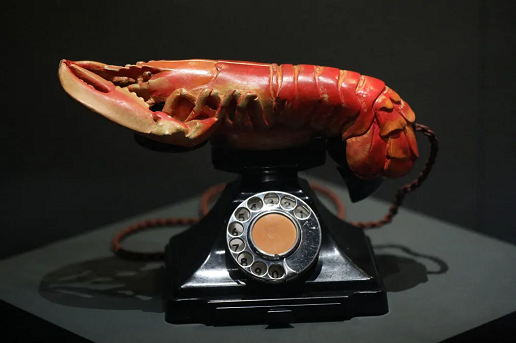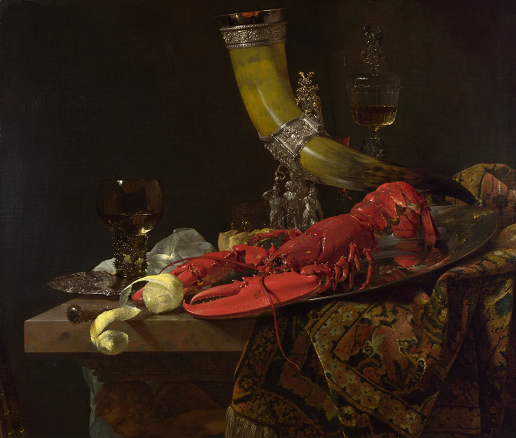Lobsters, with their shiny red shells and oceanic appeal, have evolved into symbols of luxury well beyond the culinary world. Known as a high-ticket menu item, lobsters are celebrated in fashion and art, serving as cultural icons. On restaurant menus, lobster dishes often come with hefty price tags, reaching hundreds of dollars in cities worldwide. High fashion has embraced the lobster motif, with brands like Schiaparelli, Dior, and Maison Margiela showcasing its unique form. Historically, lobsters appear in Japanese, Flemish, and surrealist art, symbolizing longevity, power, and even erotica. The surrealist Salvador Dalí continually returned to the lobster as a playful and erotic motif in his work, perhaps most famously with “Lobster Telephone” from 1936. Isabel Infantes/AFP/Getty Images
The surrealist Salvador Dalí continually returned to the lobster as a playful and erotic motif in his work, perhaps most famously with “Lobster Telephone” from 1936. Isabel Infantes/AFP/Getty Images
Although once considered "survival fare," lobsters gained status over time. In early European art, particularly in the opulent still-life paintings of 16th- and 17th-century Flanders, they signified wealth. The surrealist movement later elevated their symbolism through Salvador Dalí, whose famed “Lobster Telephone” and collaboration with Elsa Schiaparelli brought the lobster into haute couture. Wallis Simpson’s appearance in Schiaparelli’s lobster gown further solidified its iconic status. Today, from food to fashion, the lobster endures as a global luxury emblem, though the environmental impact on its natural habitat remains a concern.







